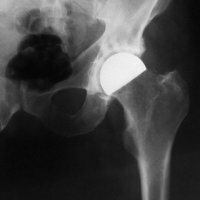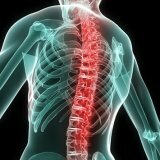Necrosis of the femoral head

One of the main organs of our body is the spine. He holds all the organs and weight of our body. If a disease occurs in some part of it, then it is fraught with consequences. Today we will talk about the head of the thigh, which is very often affected by a disease, such as aseptic necrosis.
Description of the disease
As you know, human bones, joints also contain blood vessels that nourish bone tissue. Aseptic necrosis of the hip joint, namely, its component part - the head - is a very serious disease caused by permanent or temporary disruption of the blood flow in the joint head, which can lead to disability of the person. As a result of insufficient blood flow, the joint head does not receive the proper amount of nutrients and oxygen, which in turn leads to necrosis( or it is also called necrosis) of the cells of both bone tissue and cells of the nearby bone marrow. Also die and cartilage covering the head, and it rubs against the pelvic surface. Over time, dead cells are replaced by scar tissue, and if necrosis progresses and occupies a very large area, then the femoral head becomes less durable with time than before. All this leads to the fact that it simply can not withstand the weight of the human body any more and under the influence of the latter its destruction, cracking takes place.
Symptoms of the disease
Necrosis of the head is accompanied by a sharp pain in the joint and back, the lateral surface of the thighs, pain in the groin. There may also be pain, giving to the knee, and the pain increases with walking, stepping on the leg. Another symptom is lameness in walking, as well as restriction of movement in the hip joint( it is difficult for a person to dress, lift a leg, get up from a seat or sit on it).In addition to all of the above, you can specify and deformation of the hip muscles, which develops rapidly. As a result, the limb "shrinks" and its shortening occurs. The complexity of the disease is that under it osteoporosis, osteochondrosis can be hidden, and it is possible to be treated for years not on what is necessary, if it is not right to conduct a survey.
Causes of the disease
People with any age can be affected by thigh necrosis. First of all, these are people who are fond of extreme sports.
Causes of necrosis of the head may be:
- Fracture of the neck of the hip.
- Rheumatoid arthritis.
- Various dislocations and injuries of the hip joint. Excessive consumption of alcohol.
- Influence of a sharp pressure drop( such a disease is often found in divers).
- Use of a large number of hormonal drugs, such as glucocorticoids.
- Various physical activities.
Treatment of necrosis of the head of the hip joint
Diagnosing the disease can only be done by radiographing the joint, based on patient complaints. If the disease has just begun to develop, then a magnetic resonance imaging of the joint should be performed, which will show the onset of the disease.
To cure so simply necrosis of the head is impossible - there are no drugs that could stop the development of the disease or even cure. To begin with, you just need to maximally reduce the burden on the affected joint, and later you will have to resort to surgery.
There are 4 types of operations. In the early stages of the development of necrosis of the head, the following operations can be performed:
- Transplantation into the head and neck of the hip of the vascularized musculoskeletal implant.
- Decompression of the center of the necrosis head of the hip joint.
- Swelling and inter-osteotomy of the hip bone.
Such operations are carried out mainly in young patients who need to push back the operation for joint replacement. The result of operations is in most cases positive.
If the above operations do not help, then it is possible to perform endoprosthetics in the hip joint. This operation can be carried out at any stage of the disease and people of all ages.
Necrosis of the head is a very serious disease and in order to prevent it, one has to be more attentive to oneself.


